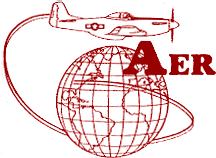|
February Cover Girl
Many pilots, myself included, believe the instrument rating is the most difficult to attain. Not only are there reams of regulations, procedures and acronyms—the 6 Ts, for example: turn, time, twist, throttle, talk—but the whole endeavor seems so unnatural when all along you’ve relied on visual cues to keep from going belly up.
During my initial instrument training, I used an old Frasca flight training device (FTD). Big, poorly lit, because of the way the flight school had situated it, and costly, because it required an instrument instructor as well as the machine itself, it served its purpose. But it was not without some irritating quirks (more on that in a moment).
Now, of course, there are more—and less expensive—options.
Called Personal Computer-Based Aircraft Training Devices (PCATDs), they are, for the most part, just procedures trainers, enabling you to get those Ts in the proper order, though they do offer the yoke, throttle quadrant and rudder to help “keep it real.” Even the GAO, which did a study of the effectiveness and safety of using this type training, has come out with at least a tepid endorsement of the technique.
In addition, several instrument training software packages are available for your PC. Lacking many of the actual control devices mandated by the FAA--with some you can just use your keyboard if you want--and therefore not strictly speaking PCATDs, they nevertheless offer a very cheap way to get the procedures in place.
Back to the past and my struggles with the Frasca.
One eye-opener for me was that the Frasca I used was much more difficult to “fly” properly than the real thing. The control inputs were too easy, giving no feel or feedback. Consequently, it was difficult to avoid over-controlling, making precise approaches tough to execute, at least initially. I remember the DMEs being particularly frustrating. So much so that on more than one occasion, after struggling through numerous missed approaches, I threatened to quit the whole darned undertaking.
So it is that this month’s Maiden finds herself in the throws of a similar PCATD-induced trauma, as she tries to master the intricacies of another ILS approach to minimums. Let’s check in and see how she’s doing, shall we?
Our February Mile-High Maiden
Miss D’approach
“Instrument flying is sooo overrated! Maybe I’ll just be a flight attendant.”
More Mile-High Maidens...
|
